Terra firma
The University of Georgia College of Agricultural and Environmental Sciences (CAES) operates farms and research and education centers across Georgia. These facilities aide research done by CAES faculty, staff and students, as well as Cooperative Extension agents. From peanuts to cattle to water, these hubs of developing knowledge impact the breadth of the agricultural sector.
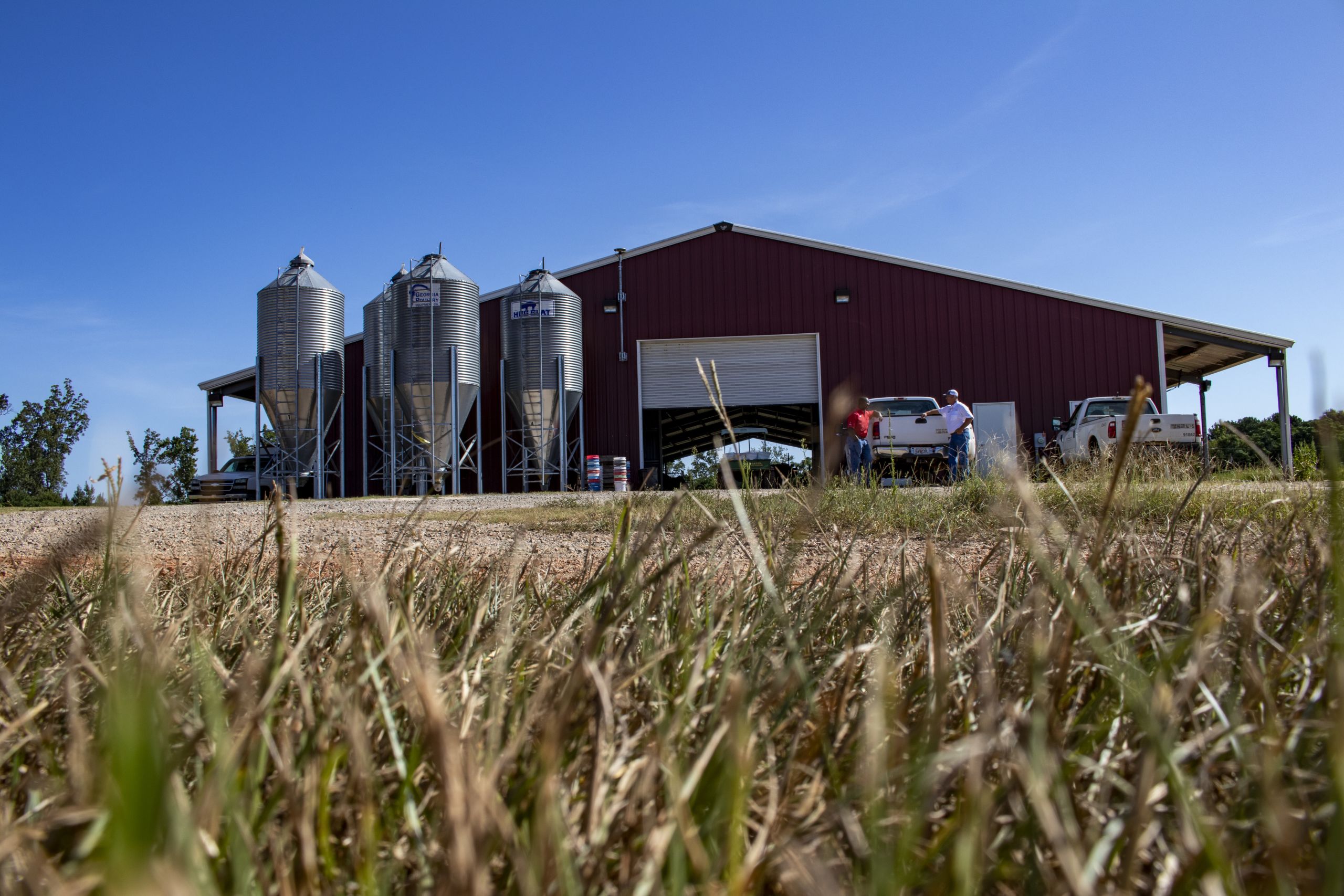
Research Centers

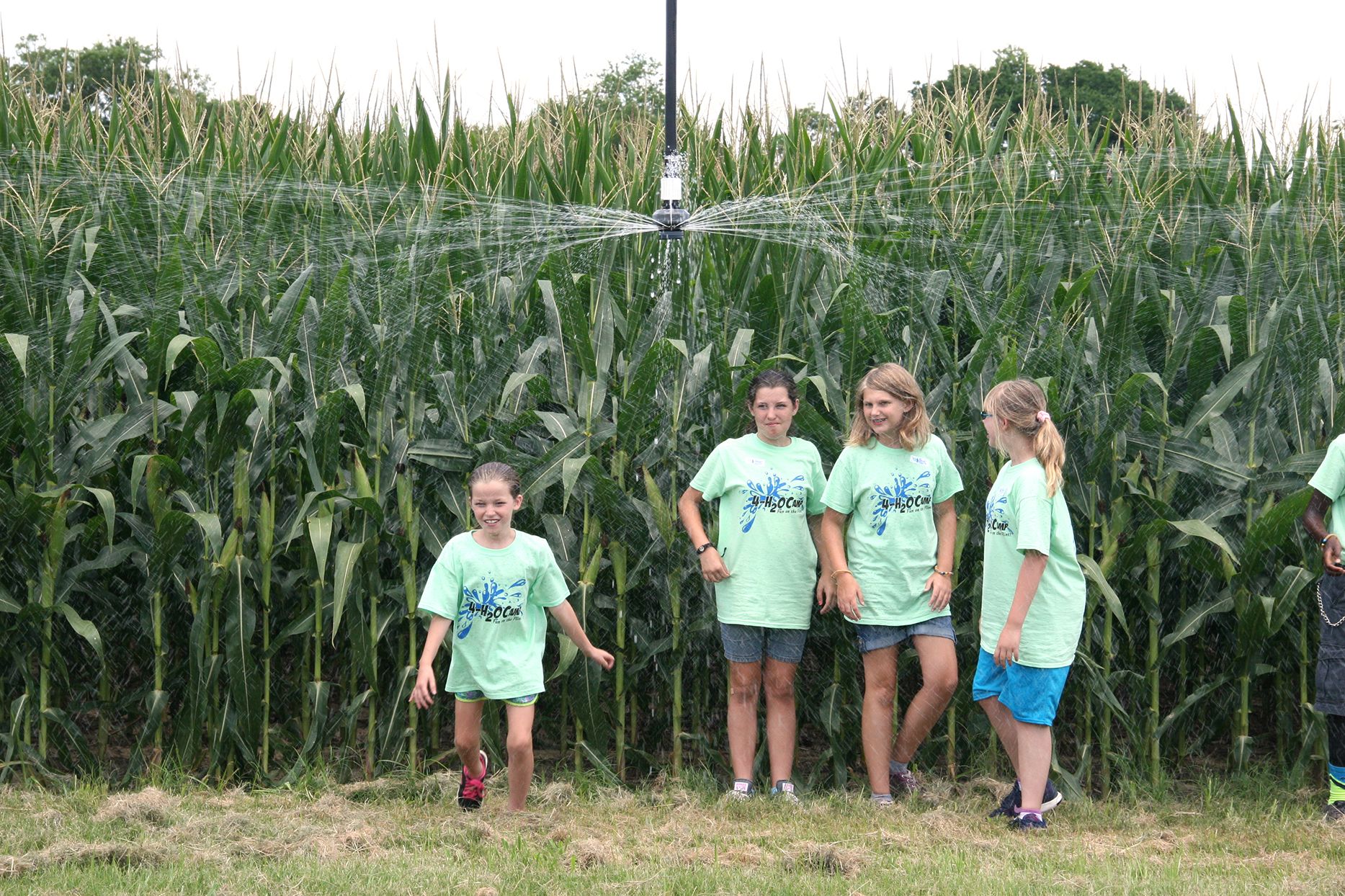
4-Hers enjoy their time under the irrigation pivot during 4-H20 day at Stripling Irrigation and Research Park in Camilla, Georgia. By Clint Thompson
4-Hers enjoy their time under the irrigation pivot during 4-H20 day at Stripling Irrigation and Research Park in Camilla, Georgia. By Clint Thompson
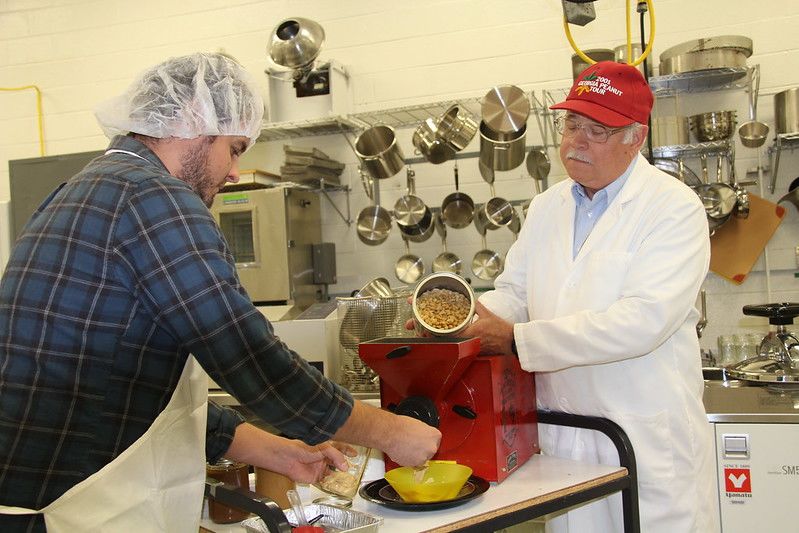
UGA food scientist Dick Phillips grinds fresh peanut butter in the pilot plant at the Food Product Innovation and Commercialization program on the UGA campus in Griffin, Ga.
UGA food scientist Dick Phillips grinds fresh peanut butter in the pilot plant at the Food Product Innovation and Commercialization program on the UGA campus in Griffin, Ga.
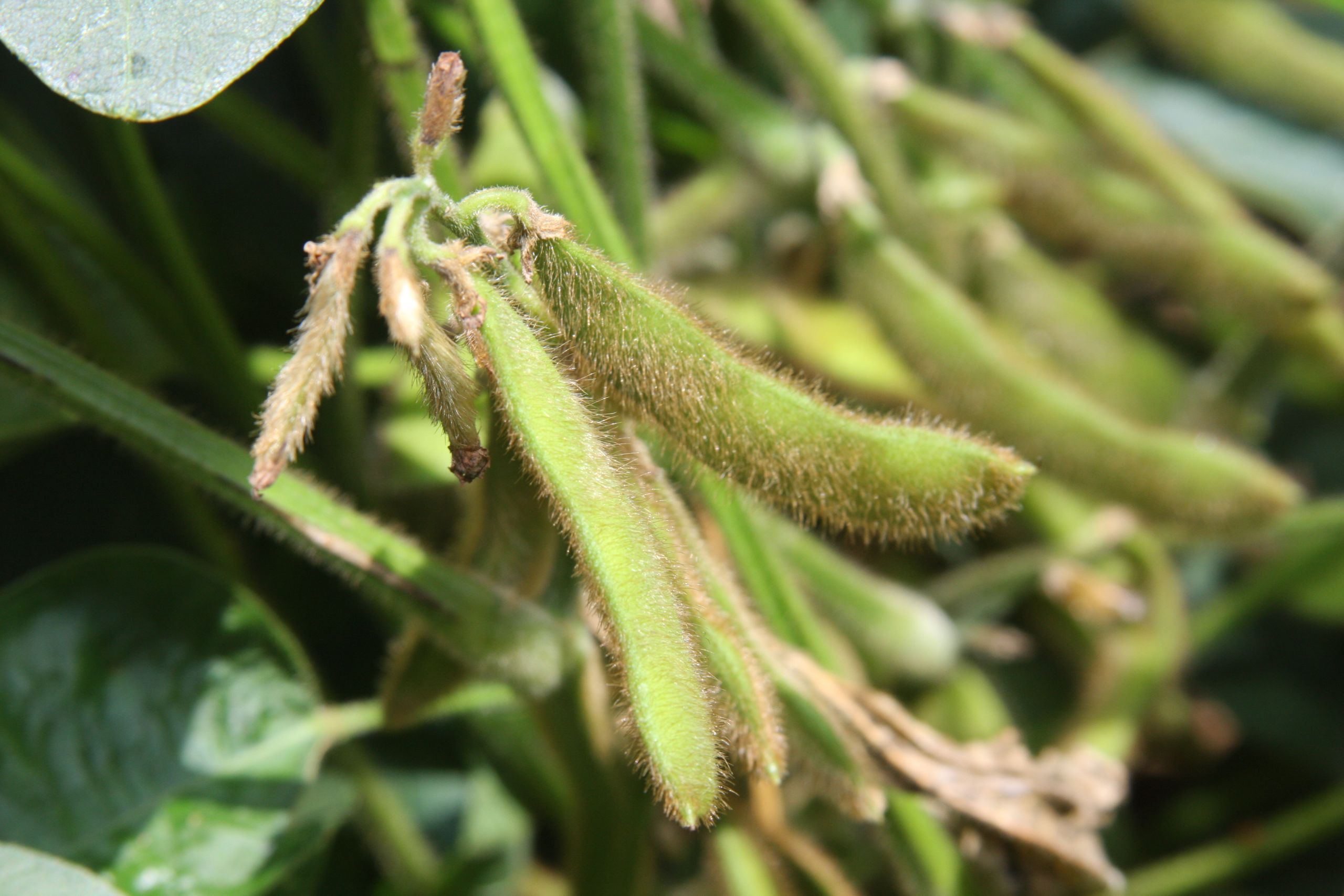
Beans grow at the Southeast Georgia Research and Education Center
Beans grow at the Southeast Georgia Research and Education Center
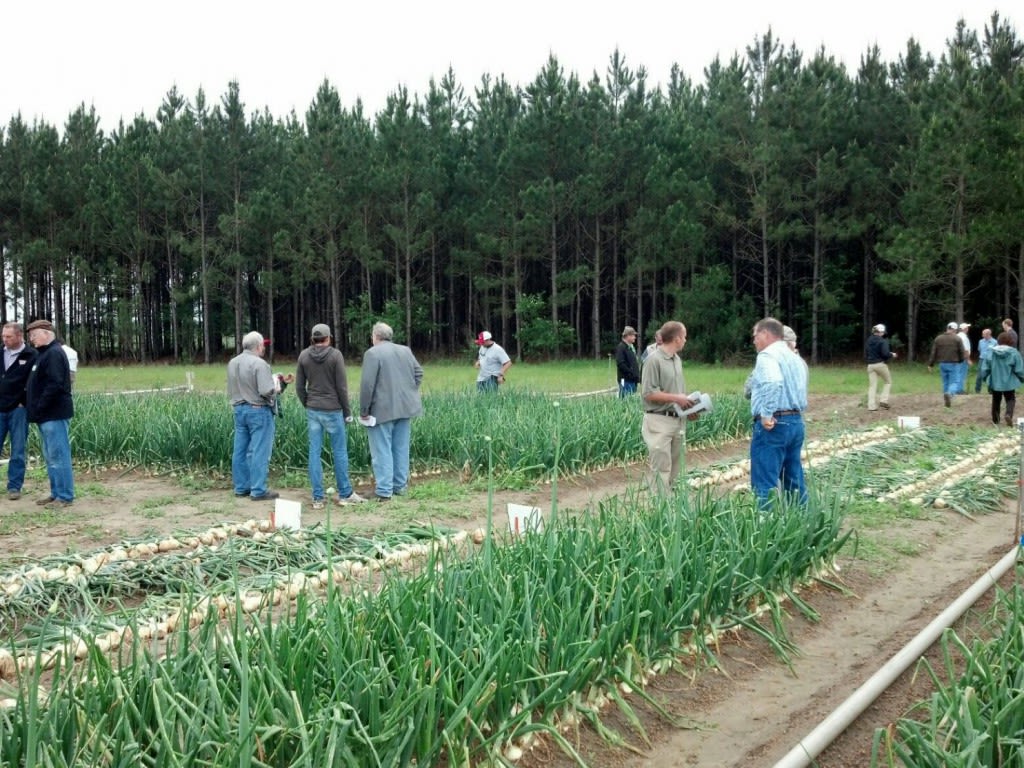
Field Day at the Vidalia Onion Research and Education Center
Field Day at the Vidalia Onion Research and Education Center
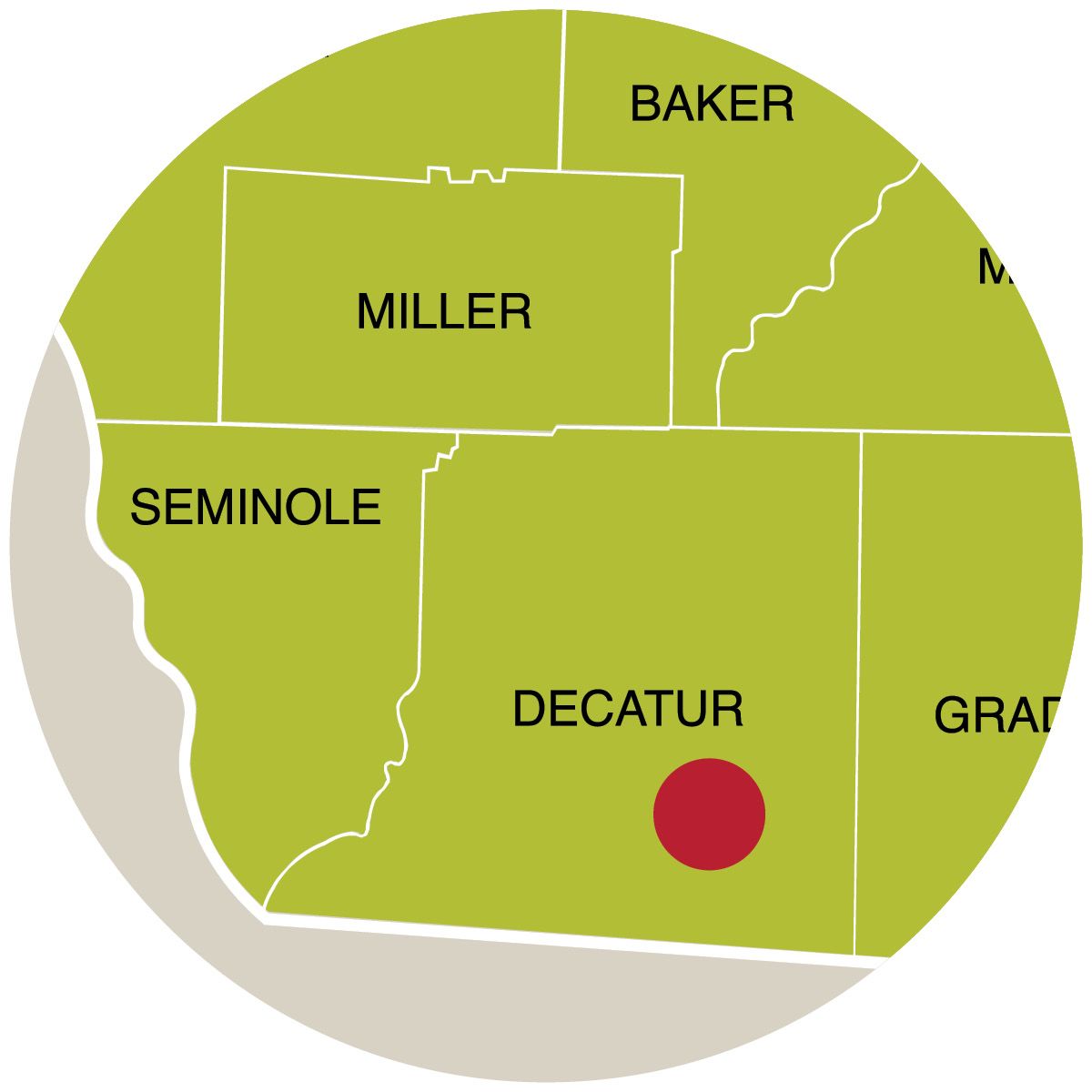
Attapulgus Research and Education Center
Attapulgus, Georgia
The Attapulgus Research and Education Center is located in Attapulgus, Georgia, about five miles north of the Georgia-Florida state line. The 300-acre farm has 100 acres designated for research plots devoted to insects, plant diseases and weed pressure in corn, cotton, peaches, peanuts, soybeans and watermelons. Current research on the farm includes a peach-breeding project to study the effect of chill hour requirements in south Georgia by Dario Chavez, an assistant professor of horticulture on the UGA Griffin campus and a soybean study designed to determine the profitability of planting late-season soybeans in fields after corn crops are harvested.
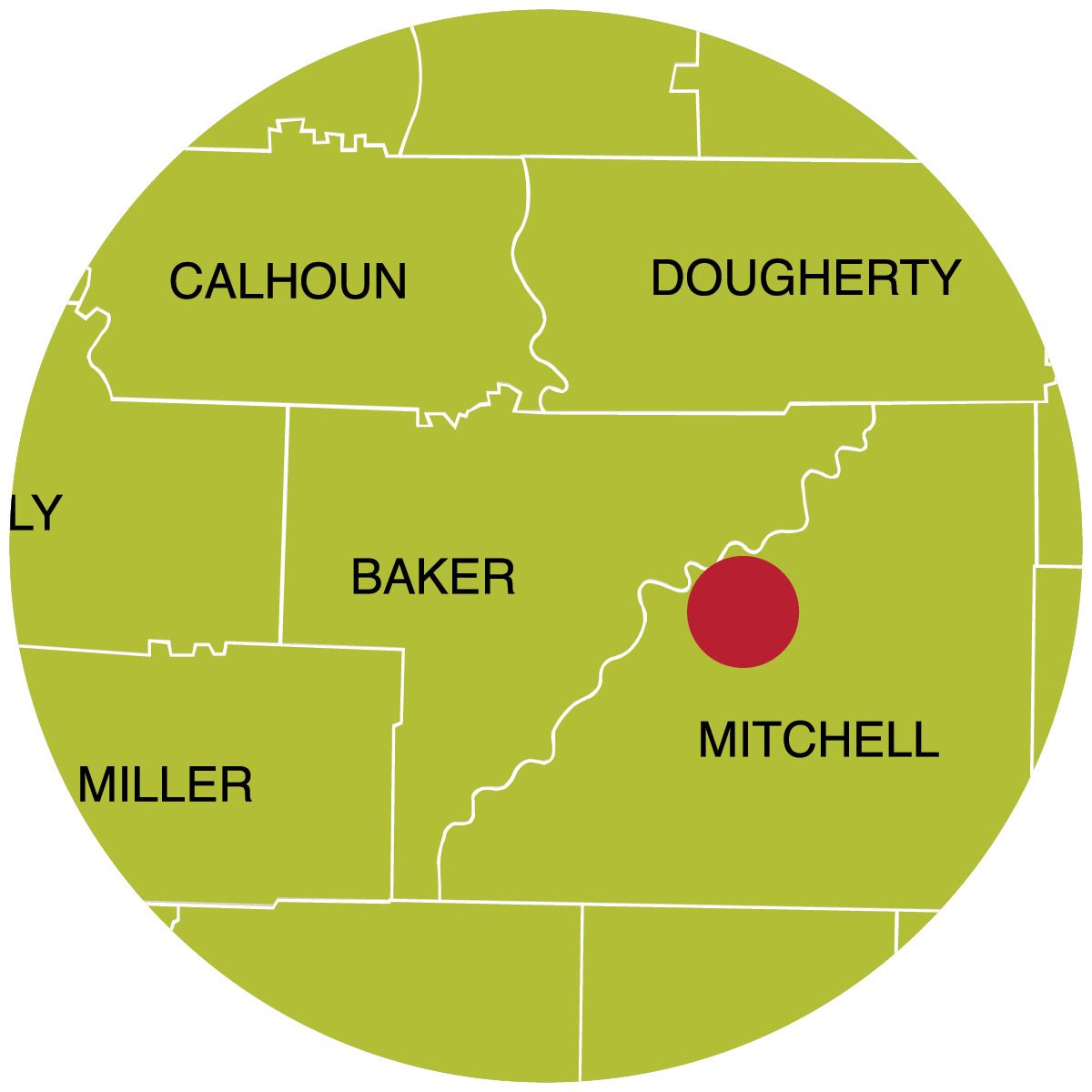
C.M. Stripling Irrigation Research Park (SIRP)
Camilla, Georgia
SIRP is a 130-acre research station located in Mitchell County, Georgia. Primarily devoted to research in cotton, corn, sweet corn, soybeans and peanuts, SIRP assists farmers in managing irrigation needs. Research studies involve timing or scheduling of irrigation by various methods, such as sensors and smartphone applications, as well as comparing crops under full irrigation, partial irrigation or no irrigation at all.
George Vellidis, a precision agriculture expert on the UGA Tifton campus, is studying whether advanced irrigation scheduling and optimally applying fertilizer will reduce nutrient losses in cotton, peanut and corn. Cotton physiologist John Snider is comparing new cotton varieties under excessive irrigation, optimal irrigation and dryland conditions. CAES alumnus Calvin Perry (BSAE — Agricultural Engineering, ’86; MS — Agricultural Engineering, ’88) is superintendent at the center.
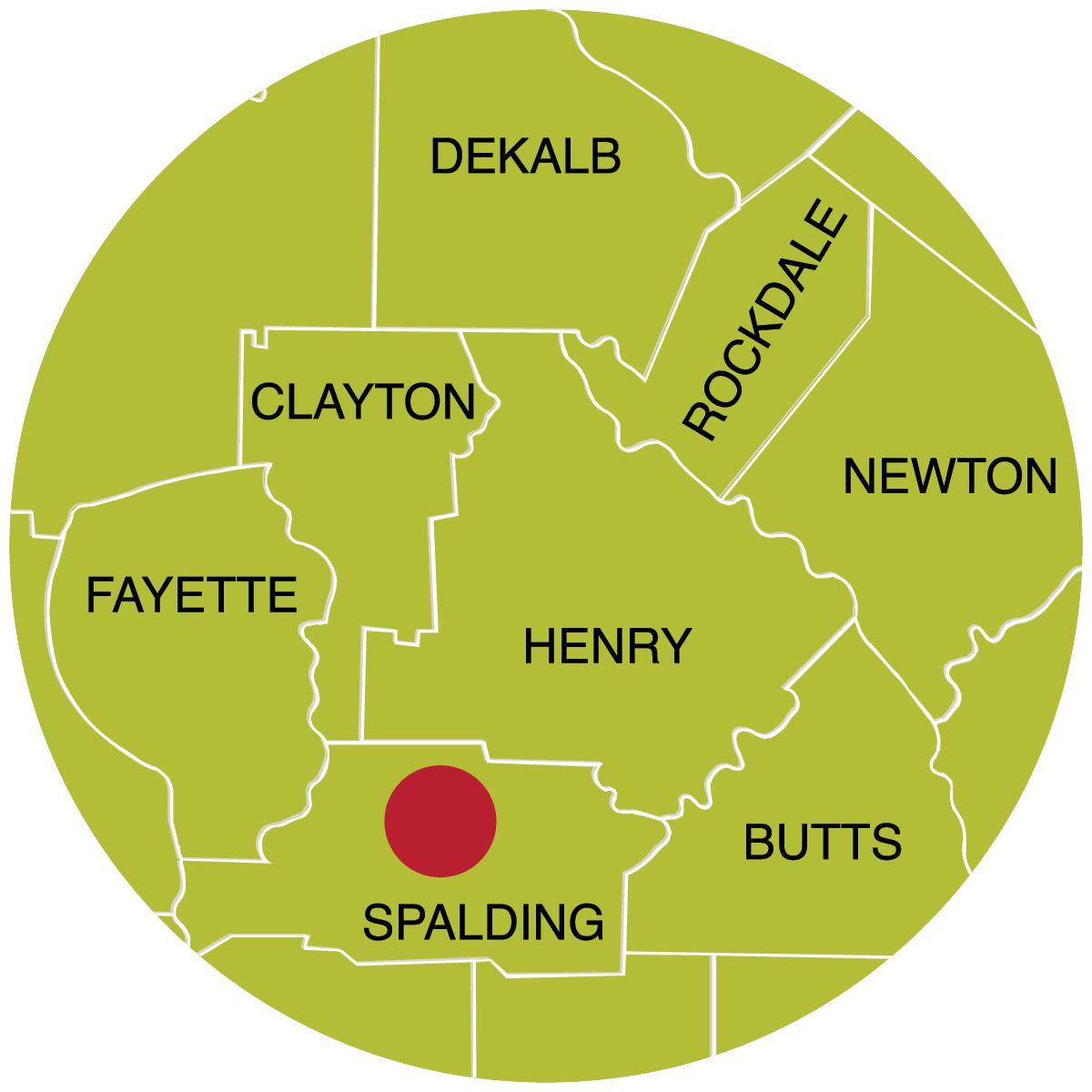
Food Product Innovation and Commercialization Center (FoodPIC)
Griffin, Georgia
Opened in 2017, the UGA Food Product Innovation and Commercialization Center on the UGA Griffin campus is a state-of-the-art, 14,500-square-foot facility was designed to partner College of Agricultural and Environmental Sciences and other UGA faculty with food entrepreneurs to help with product development, packaging, food safety, consumer acceptance and marketing. Past FoodPIC projects include improved drying technologies for Georgia’s rabbiteye blueberries, frozen desserts using Georgia fruits, and a grain-based milk beverage now being produced in California. FoodPIC is designed for short-term partnerships between food entrepreneurs and UGA scientists, not long-term food production and packaging.
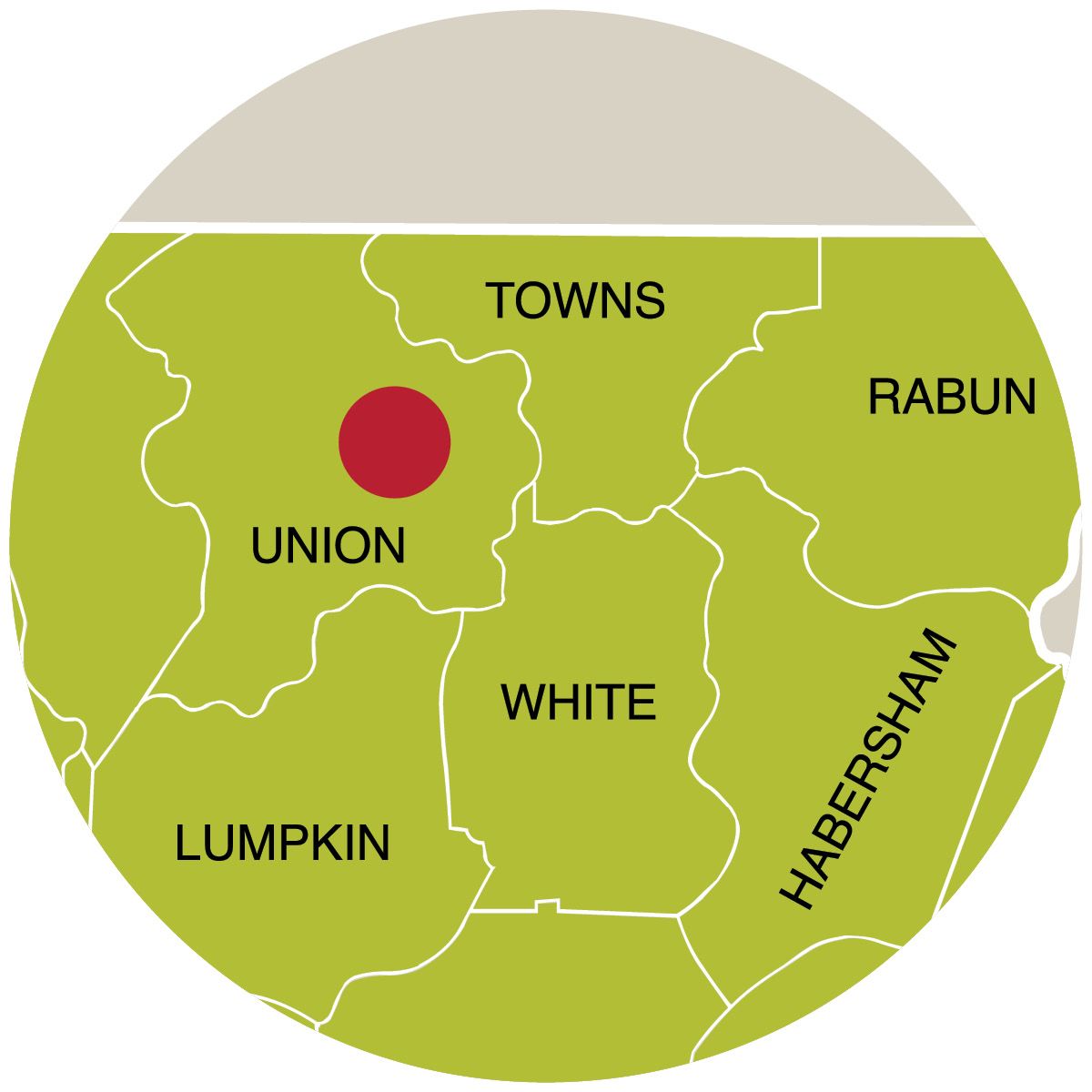
Georgia Mountain Research and Education Center
Blairsville, Georgia
Georgia Mountain Research and Education Center is a 415-acre research station located in Blairsville, Georgia, used by faculty researchers to evaluate ornamentals, forages and turf grasses under cold conditions. Esther van der Knapp, a plant biologist in the Department of Horticulture, is studying tomatoes at the center to identify genes for tomato size and how they could be used to increase size and flavor of commercial varieties without compromising quality.
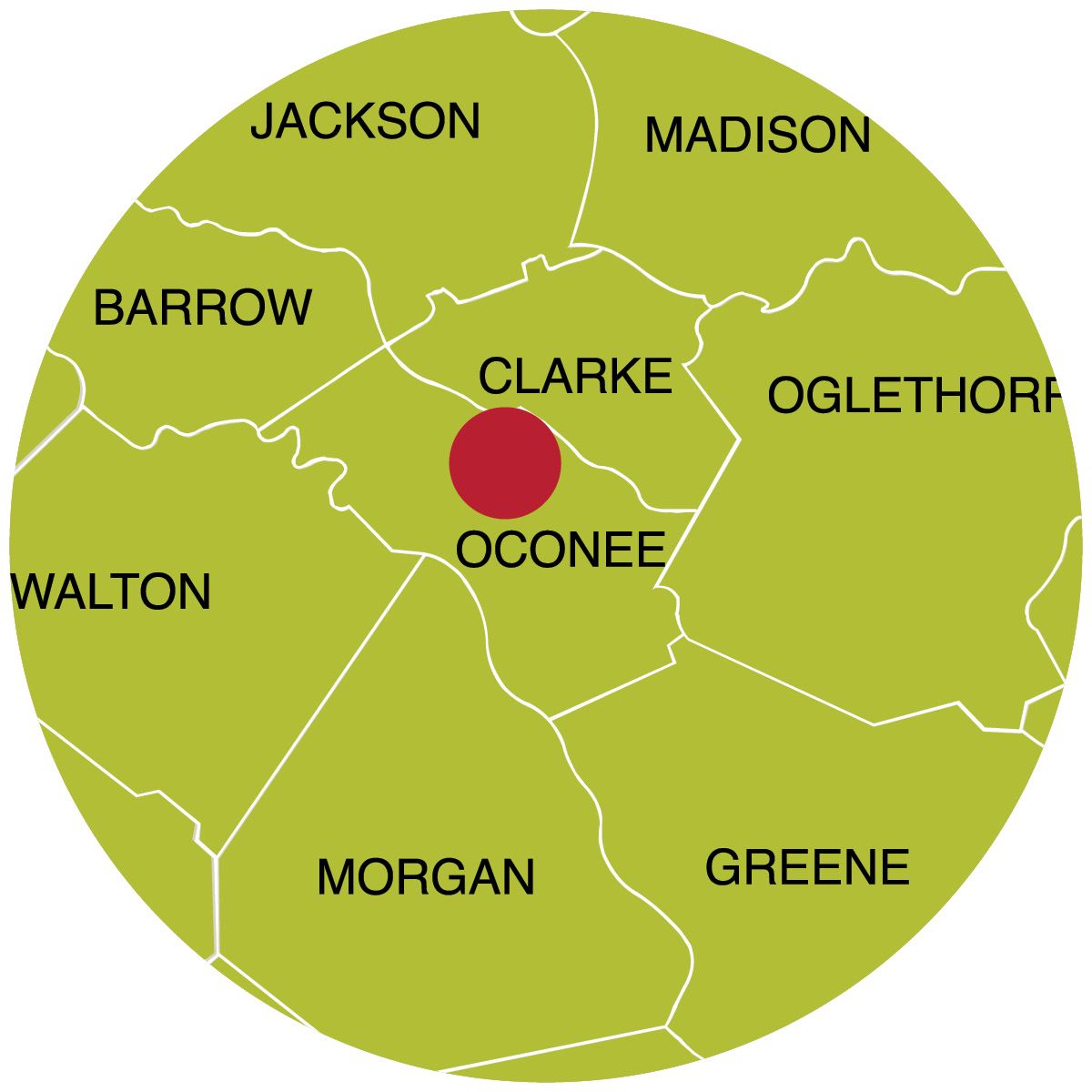
J. Phil Campbell Sr. Research and Education Center
Watkinsville, Georgia
The J. Phil Campbell Research and Education Center, located in Watkinsville, Georgia, operates on 1,077 acres, which are divided into four units in Oconee County. The center supports research projects from faculty in the departments of Animal and Dairy Sciences (ADS), Crop and Soil Sciences, Entomology, Horticulture and Agricultural Economics. Nick Hill, a professor in Crop and Soil Sciences, has used the center for his research into perfecting a “living mulch” system in corn production. Colleague Nick Basinger is studying cover crops as a mitigation strategy for weeds in Georgia agriculture, specifically Palmer amaranth, a problem weed in field corn, cotton, peanut and soybean crops . ADS professor Romdhane Rekaya is using the beef cattle herd on site to search for natural resistance to horn flies, one of the most troublesome insects in the livestock industry. CAES alumnus Eric Elsner (BSA — Agronomy, ’94) is superintendent at the center.
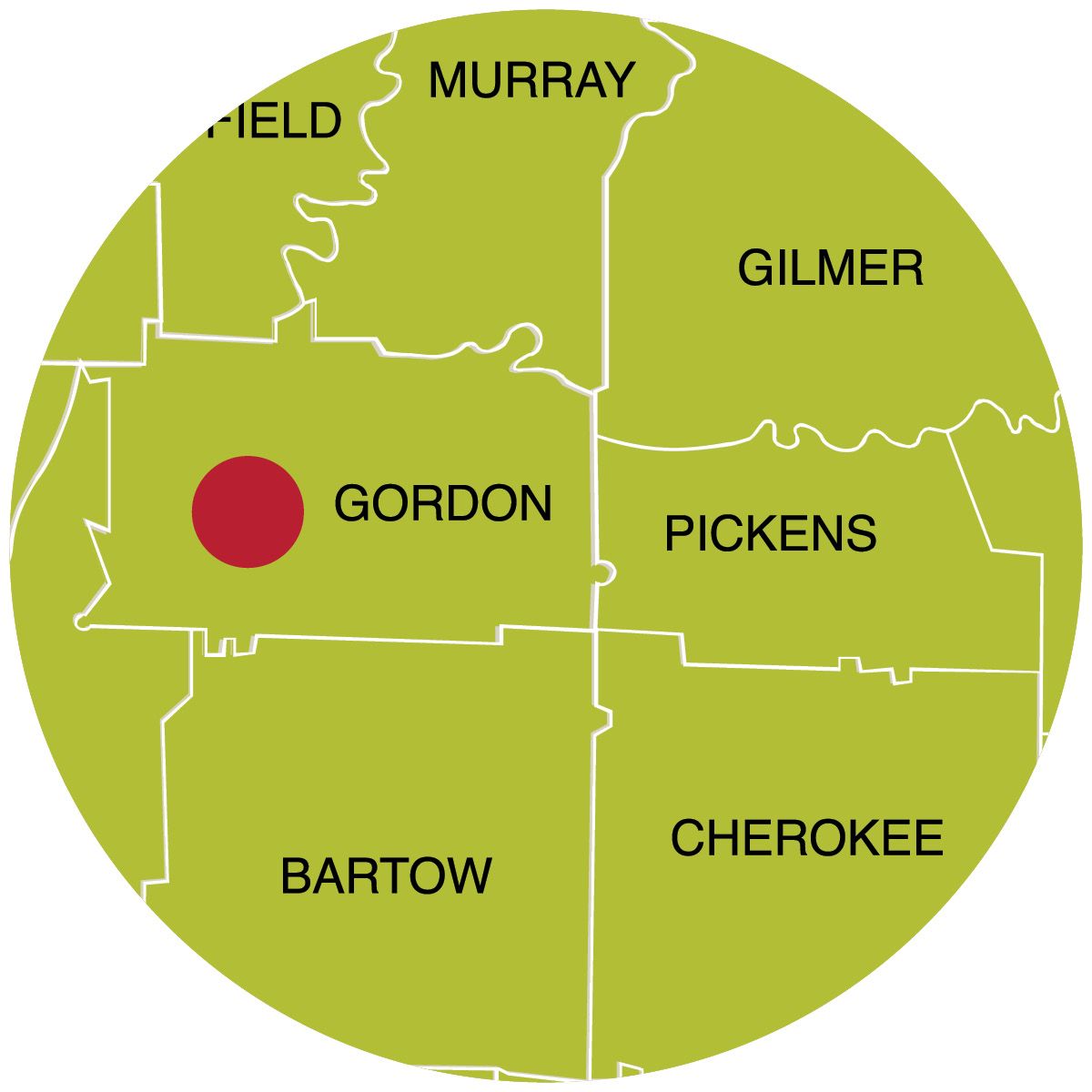
Northwest Research and Education Center
Calhoun, Georgia
The Northwest Research and Education Center in Calhoun, Georgia comprises 905 acres of research land. At the Calhoun Bull Evaluation Center, UGA animal and dairy scientists like Dean Pringle, Jason Duggin, Brenton Credille (BSA — Biological Sciences, ’04) and Romdhane Rekaya have research projects that are aimed at evaluating the performance, growth potential and breeding soundness of bulls to help improve the beef industry. Other research projects center around a variety of crop testing including corn by horticulturist Bob Westerfield (BSA — Agronomy, ’86; MAEX — Agricultural Extension, ’94) and soybeans, small grains and canola by crop and soil scientist Daniel Mailhot. Extension Agricultural and Natural Resources agent Roger Gates is screening germplasm with bermudagrass stem maggot tolerance and Extension plant pathologist Bob Kemerait is studying the effect of rust on corn and soybean plots.
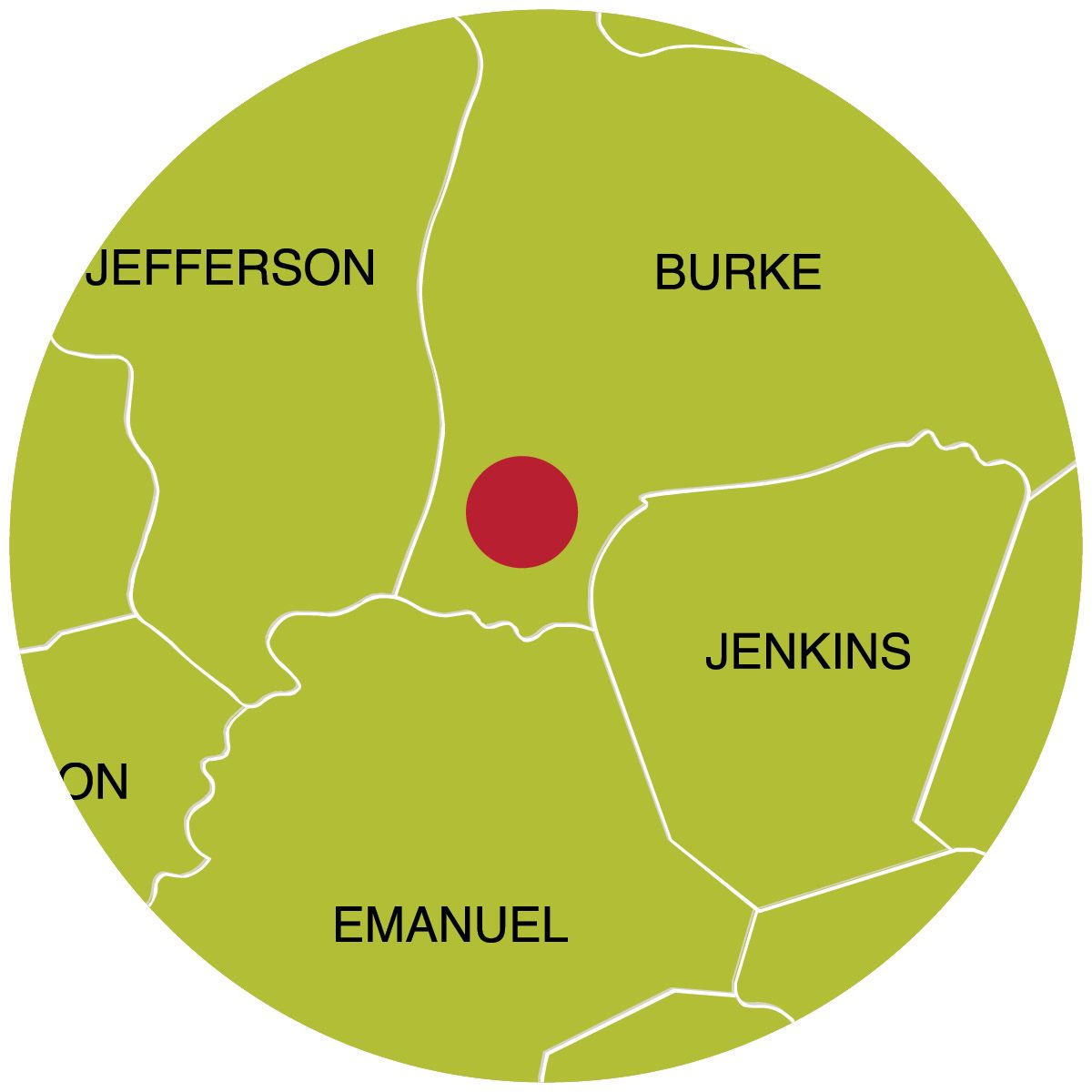
Southeast Georgia Research and Education Center
Midville, Georgia
The Southeast Georgia Research and Education Center located in Midville, Georgia, includes 720 acres devoted to forage and row crop research, such as statewide variety testing with yield trials on cotton, corn, peanuts, soybeans and small grains. It’s also involved with long term cover crop rotation studies specific to row crops. Faculty from the UGA Tifton and Athens campuses coordinate research here. CAES alumnus Anthony Black (BSAE — Agricultural Engineering, ’69; MS — Agricultural Engineering, ’71) is superintendent at the center.
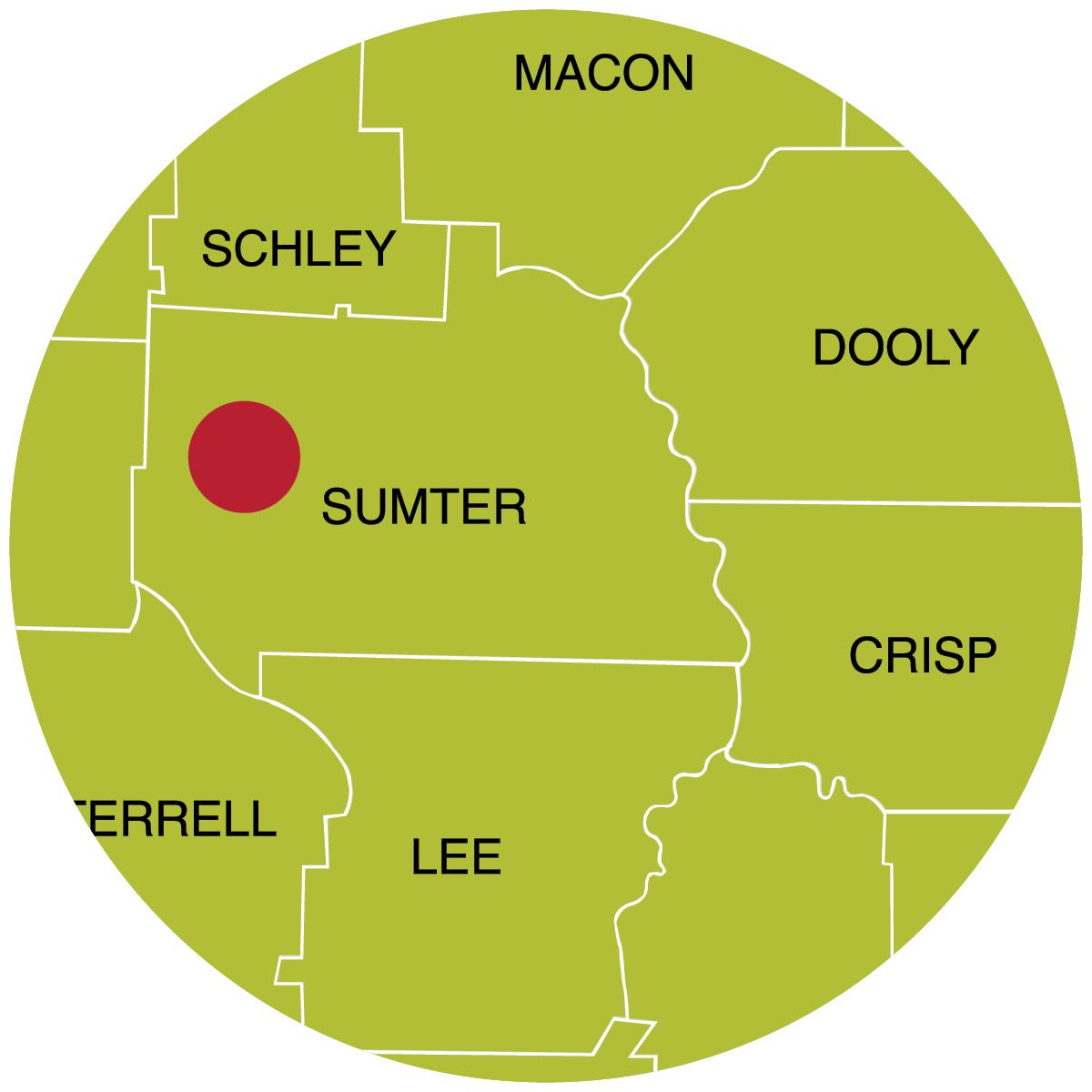
Southwest Georgia Research and Education Center
Plains, Georgia
The Southwest Georgia Research and Education Center is located in Plains, Georgia. With 525 acres, including 425 devoted to row crop production, the center researches crops like corn, cotton, peanuts, soybeans and sorghum. More than 20 UGA scientists, including entomologists, plant pathologists and weed scientists, conduct research here. In an average year, between 80 and 100 acres are dedicated to plant breeding research. The center is also home to studies dealing with variety trials and weed, insect and fungicide tests.
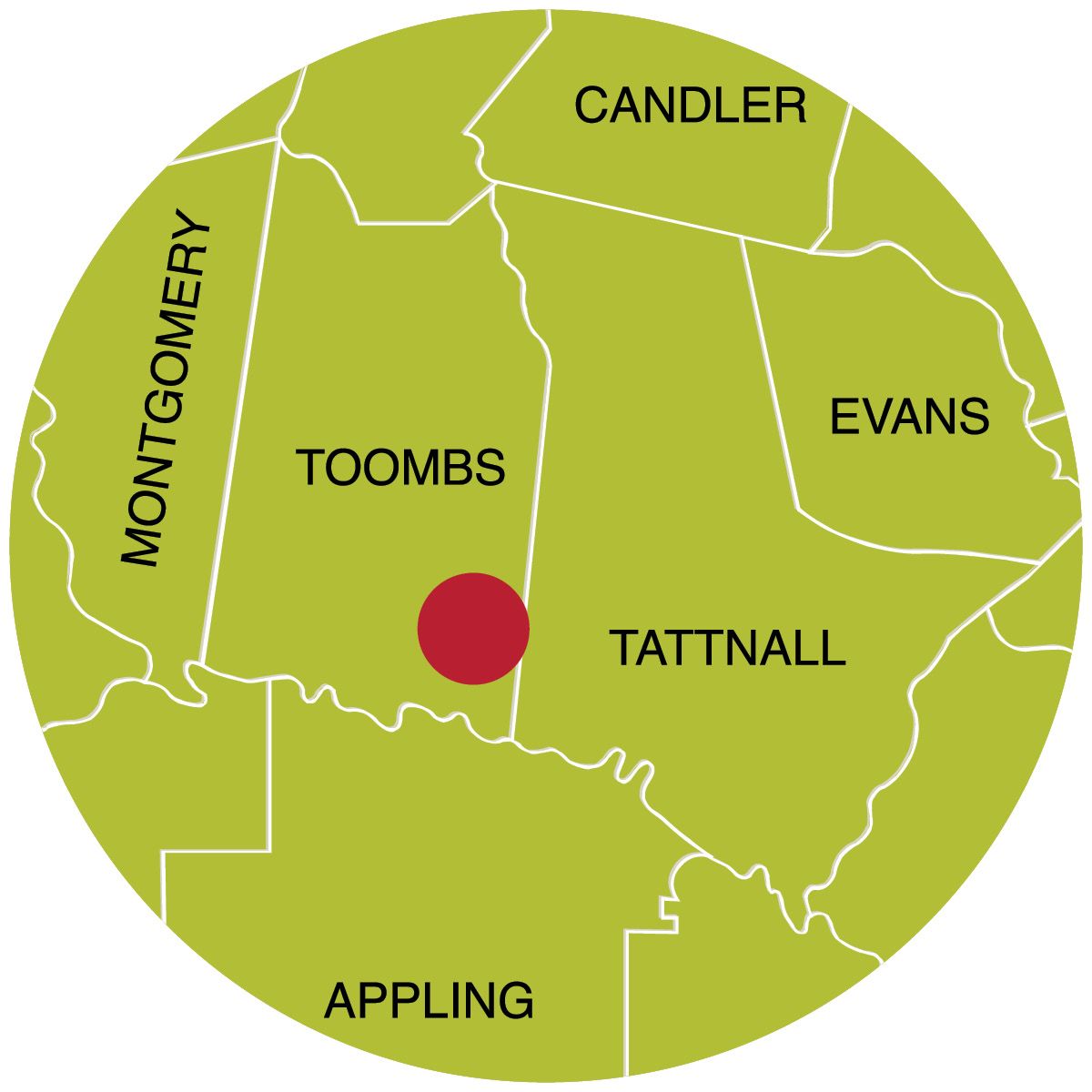
Vidalia Onion and Vegetable Research Center (VOVRC)
Toombs County, Georgia
The Vidalia Onion and Vegetable Research Center covers 142 acres between Reidsville, Georgia, and Lyons, Georgia, in Toombs County. The center’s main focus is Vidalia onion research and approximately seven acres of research plots are devoted to this crop every year. Researchers evaluate Vidalia onion varieties for yield and flavor, then relay that information to growers to keep Vidalia onions sweet. Among other research is a study evaluating different planting methods, such as using a bulb planter compared to traditional transplanting. In addition to onions, the VOVRC conducts research with fruit and vegetable crops including blackberries, strawberries, carrots, Brassica crops, garlic, shallots and artichokes, along with no-till and organic vegetable production and composting demonstrations. Researchers at the center developed a new pumpkin variety that enables south Georgia farmers to grow pumpkins commercially for the first time. The Warnell School of Forestry also maintains forestry research plots at the VOVRC.
Farms
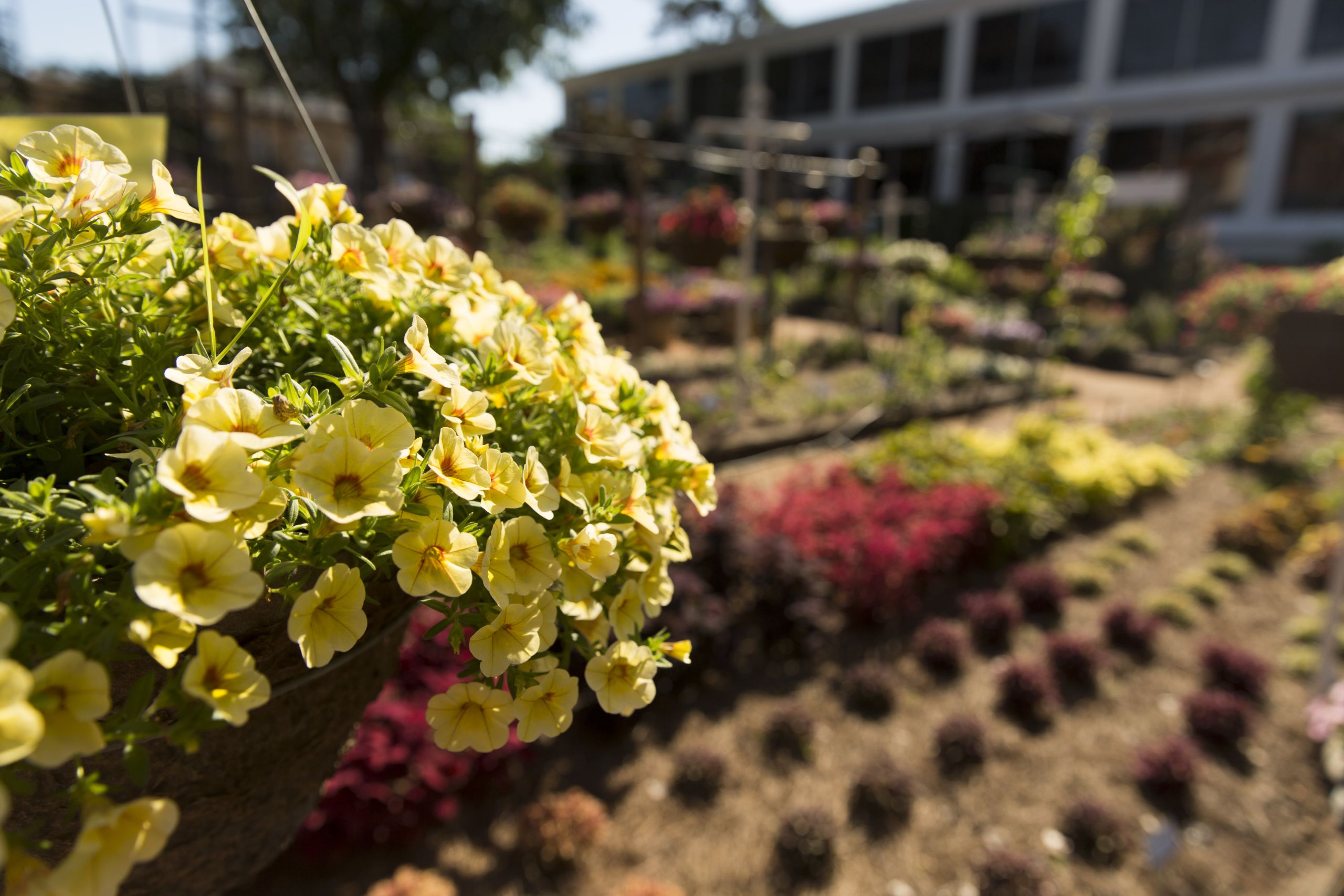
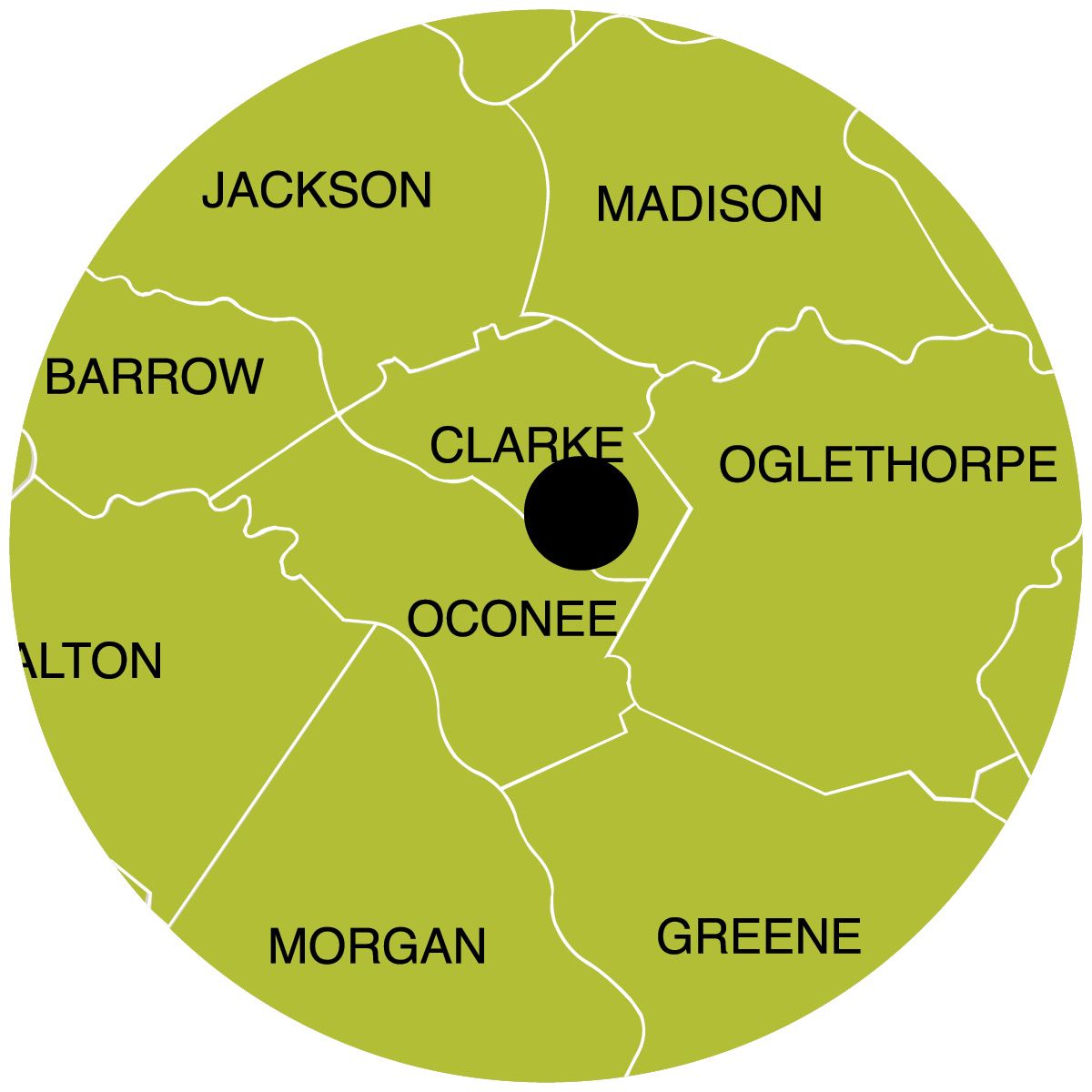
Animal and Dairy Sciences Farms
Athens, Georgia
The CAES Department of Animal and Dairy Science department has modern facilities for housing swine, sheep, beef cattle, dairy cattle, horses, and laboratory animals. The swine center at Athens consists of a 100-sow farrow-to-finish confinement unit and a 45-sow teaching herd. In addition, there are outside facilities that accommodate 100 to 150 animals, a surgery lab for experimental surgery and a surgery recovery room. The beef cattle center at Athens includes a physiology barn, beef barn, metabolism facility, and feedlots that accommodate 200 brood cows and 200 to 300 steers. The Equine Unit, housed at the Livestock Instructional Arena, consists of a covered arena, outdoor arena, and indoor, climate-controlled arena with seating for 395. The horse facilities include barns and 200 acres that accommodate 75 horses. Approximately 30 horses are managed on the farm, and are mainly used for teaching and undergraduate research purposes.
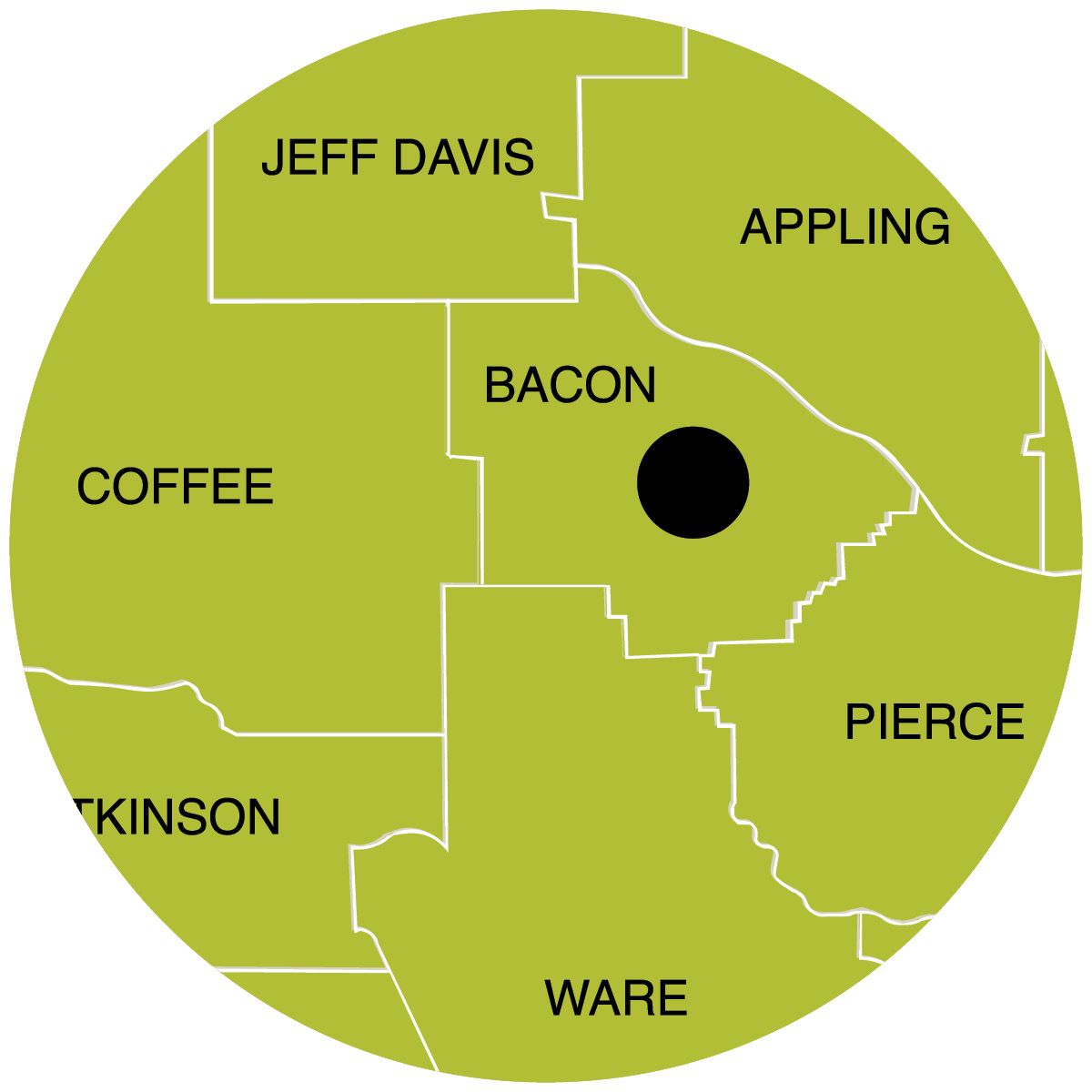
Blueberry Research and Demonstration Farm
Alma, Georgia
In 2014, Georgia was the No. 1 producer of blueberries in the country, due in part to the research of University of Georgia plant breeder Scott NeSmith and his work on the Blueberry Research and Demo farm. NeSmith, a horticulture professor and plant scientist, has developed and released 16 commercial blueberry varieties and five ornamental blueberry varieties.
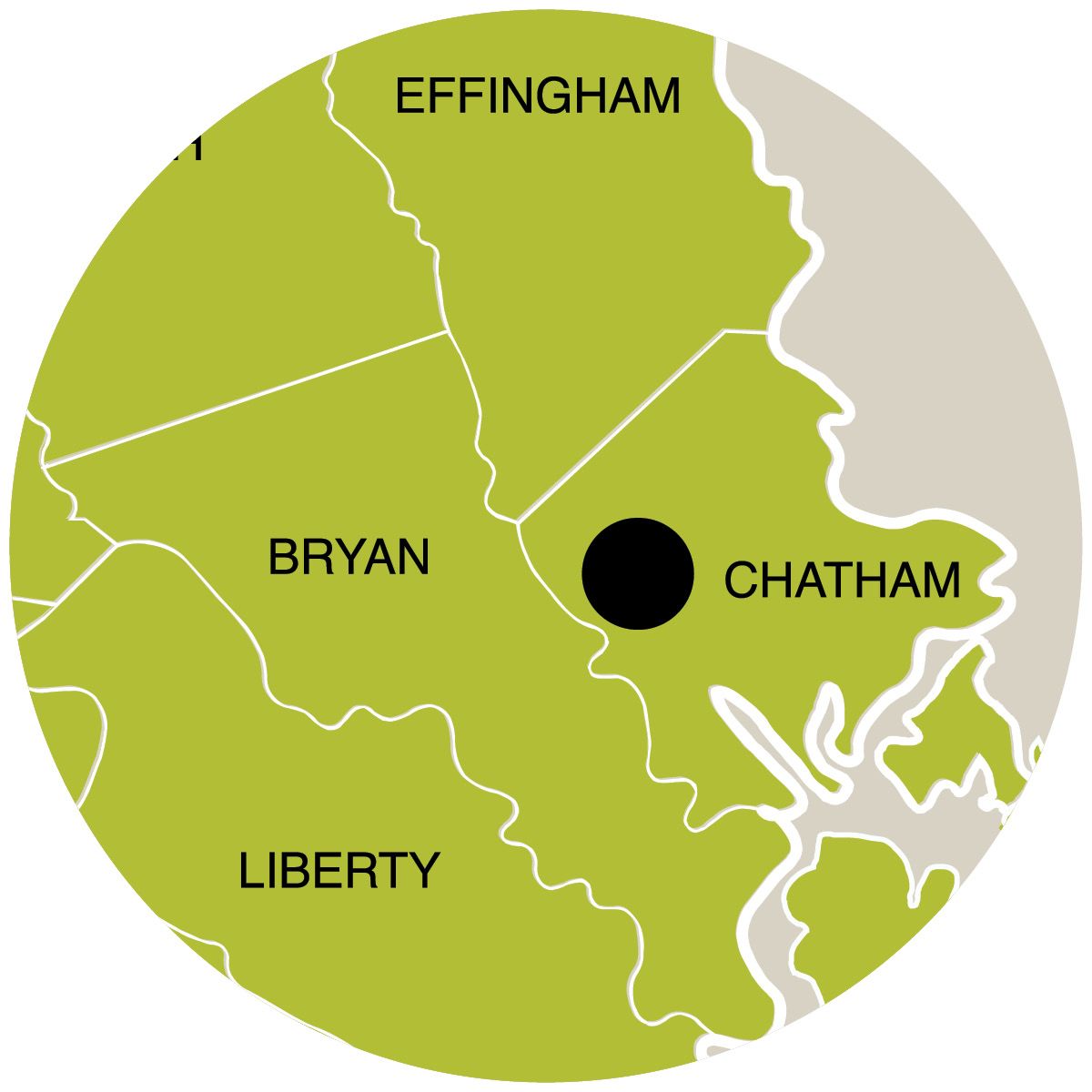
Coastal Georgia Botanical Gardens at the Historic Bamboo Farm (CGBG)
Savannah, Georgia
The CGBG is a historic public garden located 15 miles from downtown Savannah, Georgia, a popular destination for the public and an arm of the College of Agricultural and Environmental Sciences that offers year-round educational classes and workshops for all ages and abilities. In addition, the facility is a trial garden for iris varieties, which are observed for traits such as disease resistance, abundance and consistency of bloom, and general plant vigor to help determine which iris varieties are viable over the long term in the region. Xeriscaping classes teach gardeners how to conserve water and maintenance by grouping garden plants by common needs. The center also sells bamboo plants and products, and the Historic Bamboo Garden includes more than 70 different species and cultivars of bamboo, some of which are the first of their kind ever planted on North American soil. See page ## for information on the CGBG’s 100th anniversary.
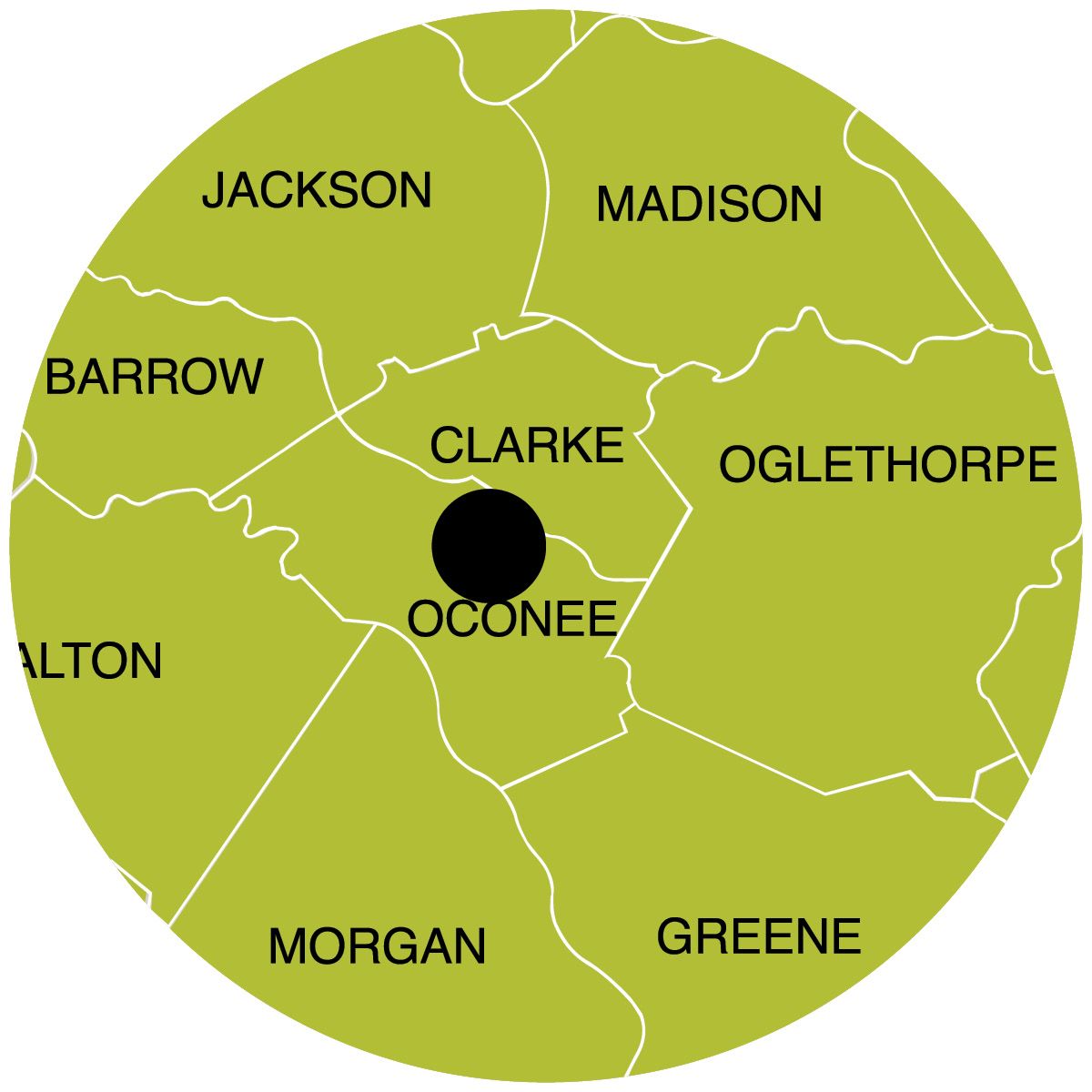
Durham Horticulture Farm (Honey Bee Program)
Watkinsville, Georgia
The Durham Horticulture Farm is a 90-acre facility located in Watkinsville, Georgia. The farm serves as a living laboratory for faculty, graduate students and undergraduates of UGA to conduct research in horticulture as well as other disciplines. As part of the College of Agricultural and Environmental Sciences, the farm hosts research in plant pathology, entomology, and soil science. Some of the larger components of the farm’s land use include pecan breeding and evaluation, disease management of peaches, ornamental breeding and evaluations, and more than six acres certified organic production area in support of an organic certificate program. The farm also is the home of the UGA Honey Bee Research Lab and a test orchard for the Georgia chapter of the American Chestnut Foundation. The Horticulture Farm also has a weather station that provides current and historical data about temperature, rainfall, soil conditions and more.
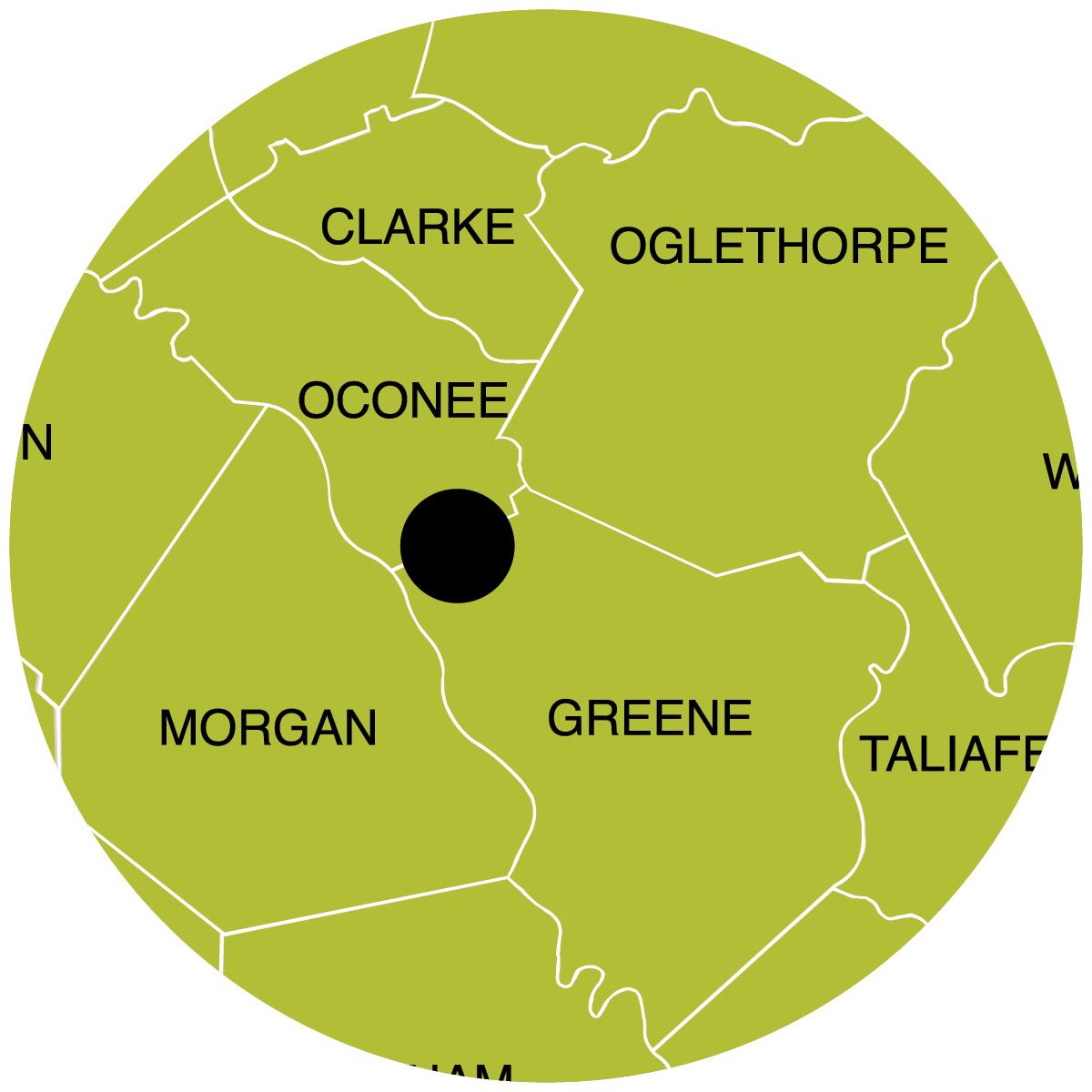
Iron Horse Farm
Greene County, Georgia
The Iron Horse Plant Sciences Farm (IHPSF), commonly known as the Iron Horse Farm, is the the College of Agricultural and Environmental Sciences’ newest farm. Located approximately halfway between Watkinsville, Georgia, and Greensboro, Georgia, the mission of the Iron Horse Plant Sciences Farm is to provide support for field research, demonstrations, and a teaching laboratory convenient for use by research leaders and teachers from the Department of Crop an Soil Sciences, as well as by other departments and agencies. The majority of the 660-acre farm is used in field research. IHPSF is noted for being the home of the historic statue of the Iron Horse, a legendary piece of local Athens lore, for which it is named.
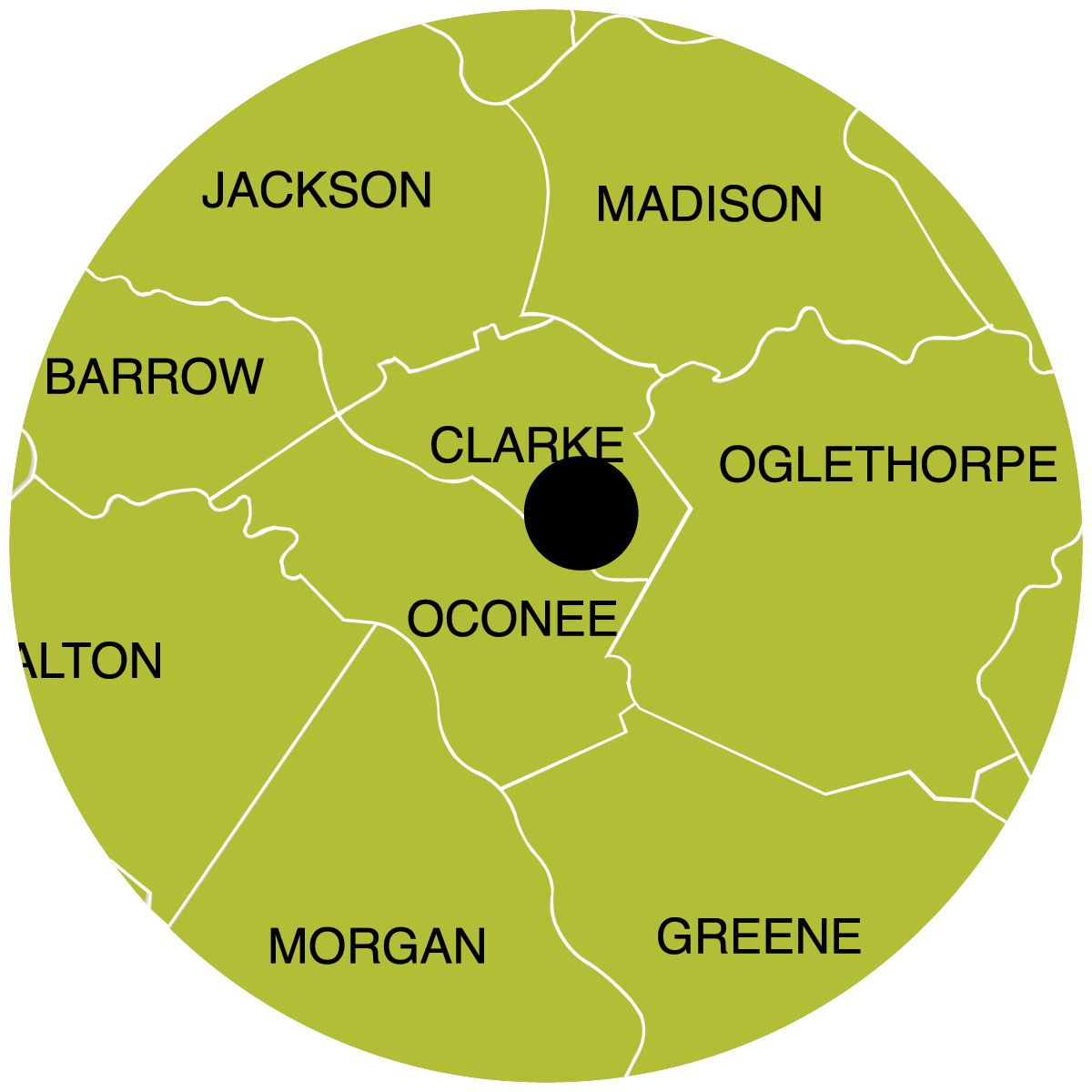
Trial Gardens at UGA
Athens campus
The Trial Gardens at UGA are used to test the newest varieties of annuals from top plant breeders from all over the world and puts perennials to the test to find those that stand up to southeastern heat and humidity. Researchers take varieties that are started in the greenhouse and plant them in the garden’s outdoor area in mid-to-late April, then begin taking data on plants the first week of June. Every two weeks, every cultivar is evaluated by for horticultural performance based on number of flowers, leaf color, uniformity of habit and flower, resistance to insects and diseases, and overall appearance. The data are combined into a single performance rating, based on a scale of one to five, with five being exceptional, one being almost dead. Researchers share these ratings on the Trial Gardens website (http://ugatrial.hort.uga.edu/UGA-Trials) for use by industry and the public.
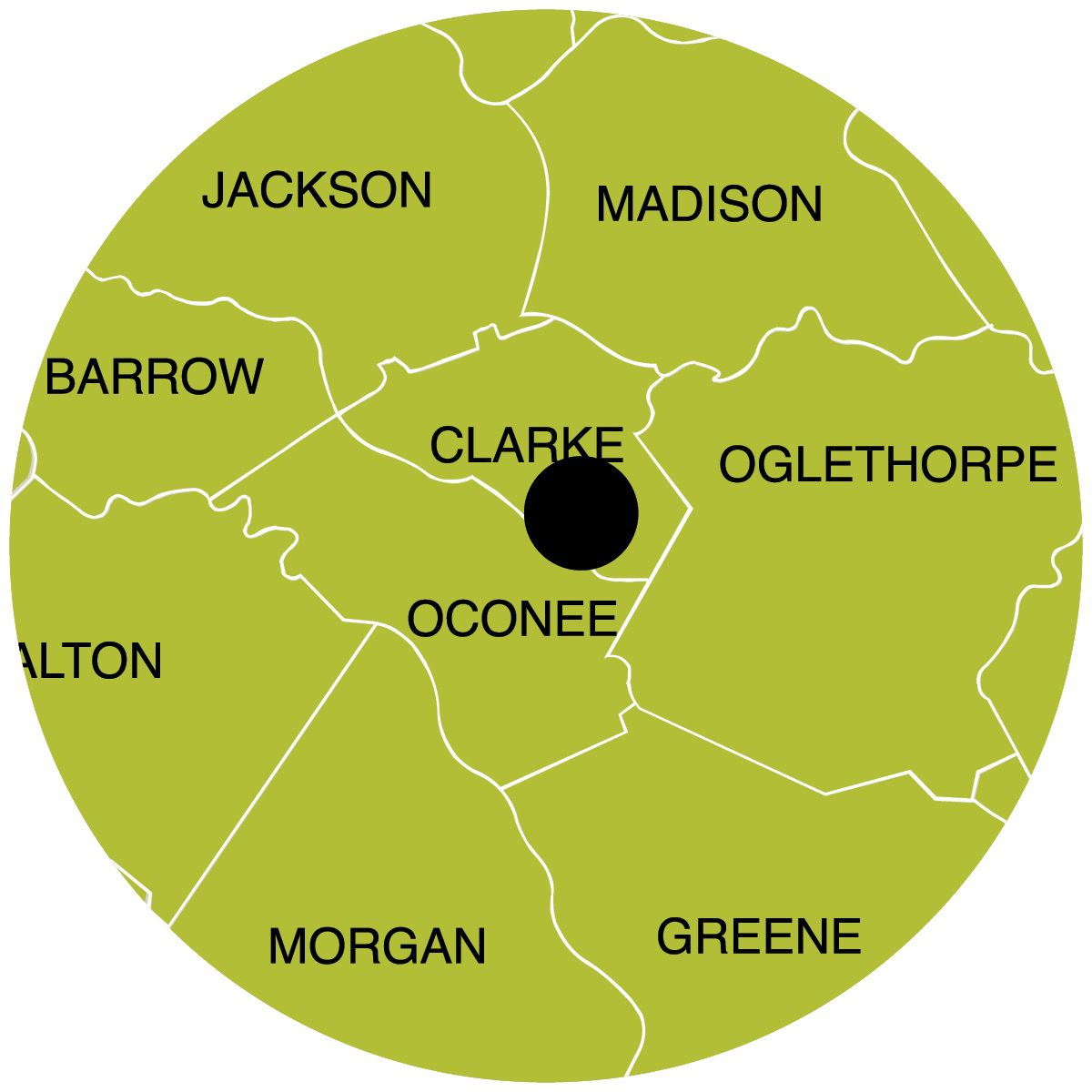
UGArden
Athens, Georgia
The UGArden, the University of Georgia’s organic teaching farm, was established to build a community of students centered on creating a sustainable food system. The goals of UGArden are to teach students to grow food using organic practices and to share healthy, sustainably grown food with members of the local community who are less fortunate. The garden, staffed by student volunteers, UGArden Club members, interns, a farm manager, Americorps Volunteers, UGA faculty, Master Gardeners and community members, grows organic vegetables, some fruit, mushrooms and medicinal herbs. The garden donates a large portion of its produce — up to 700 pounds a month this past spring — back to the community through the Campus Kitchens at UGA, a student-run hunger relief program of the UGA Office of Service Learning; the Athens Area Council on Aging, the UGA Food Pantry, UGA dining halls and food service, and through the local food bank. It also supports the Grow it, Know it program at the four Clarke County middle schools.
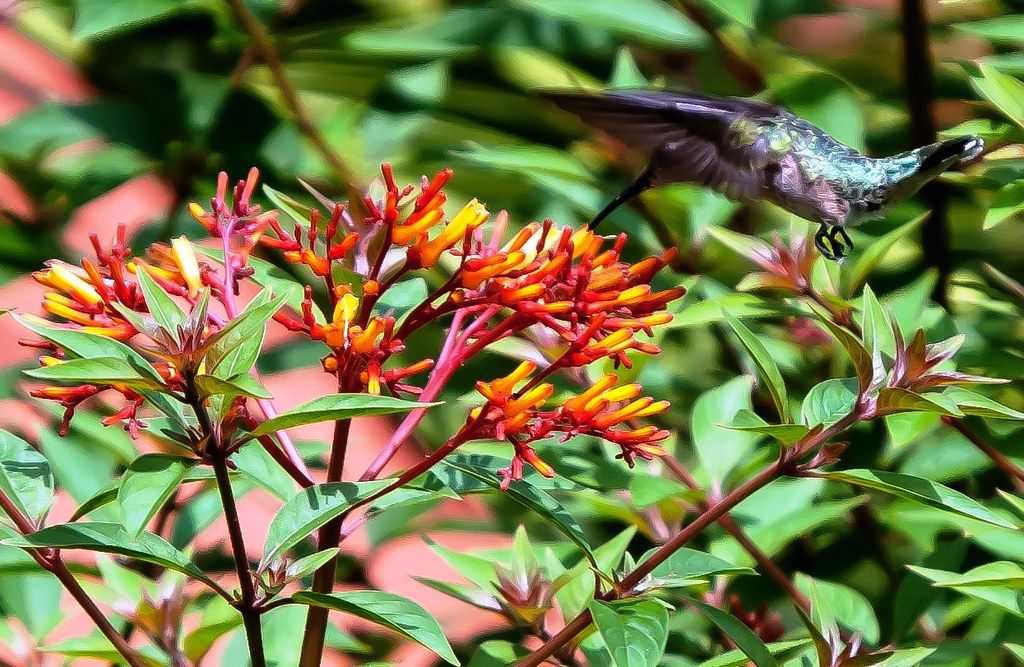
A hummingbird enjoys a visit to a lime sizzler plant in the UGA Coastal Georgia Botanical Garden in Savannah, Georgia. Photo by Norman Winter.
A hummingbird enjoys a visit to a lime sizzler plant in the UGA Coastal Georgia Botanical Garden in Savannah, Georgia. Photo by Norman Winter.
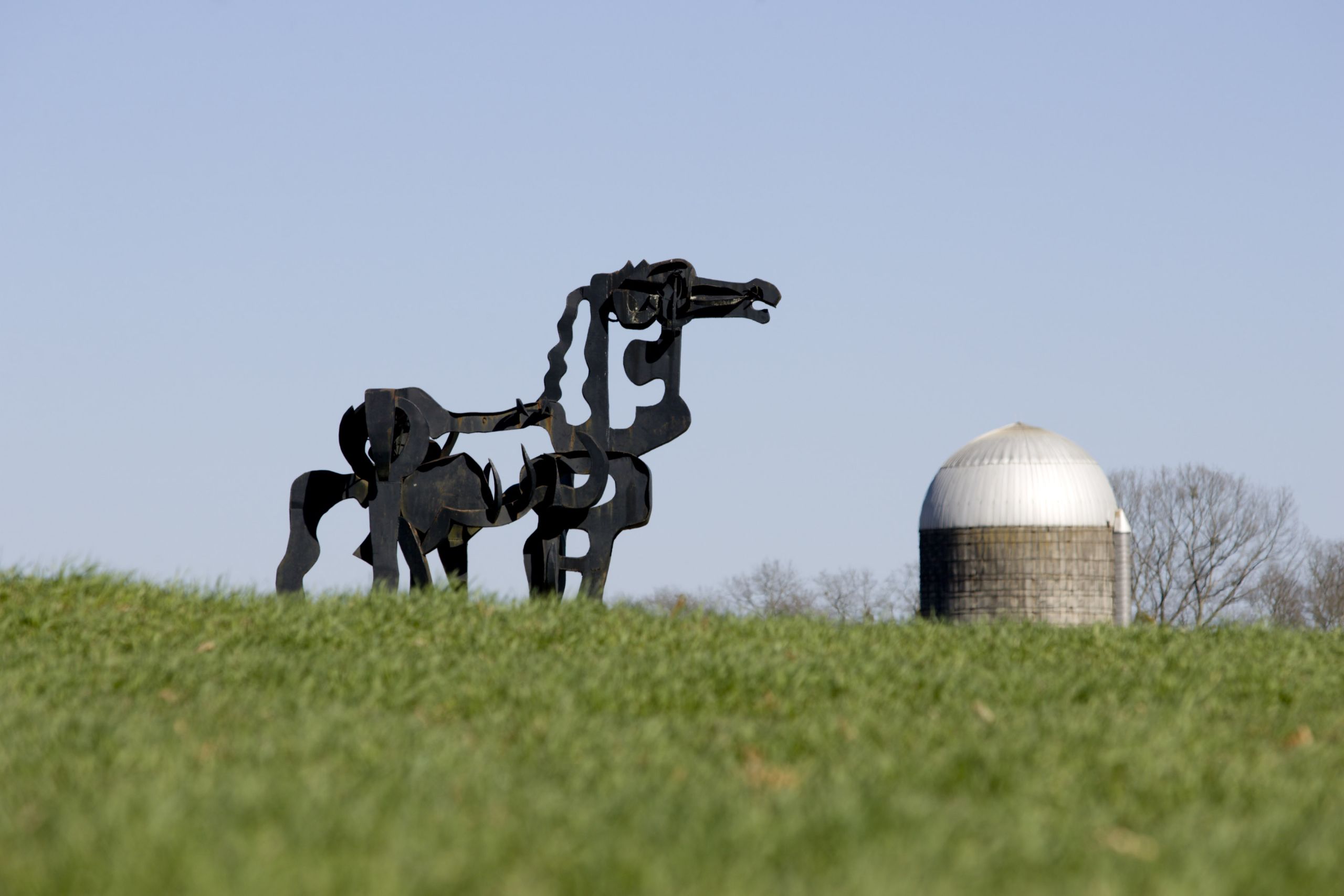
Iron Horse Farm by Andrew Davis Tucker
Iron Horse Farm by Andrew Davis Tucker
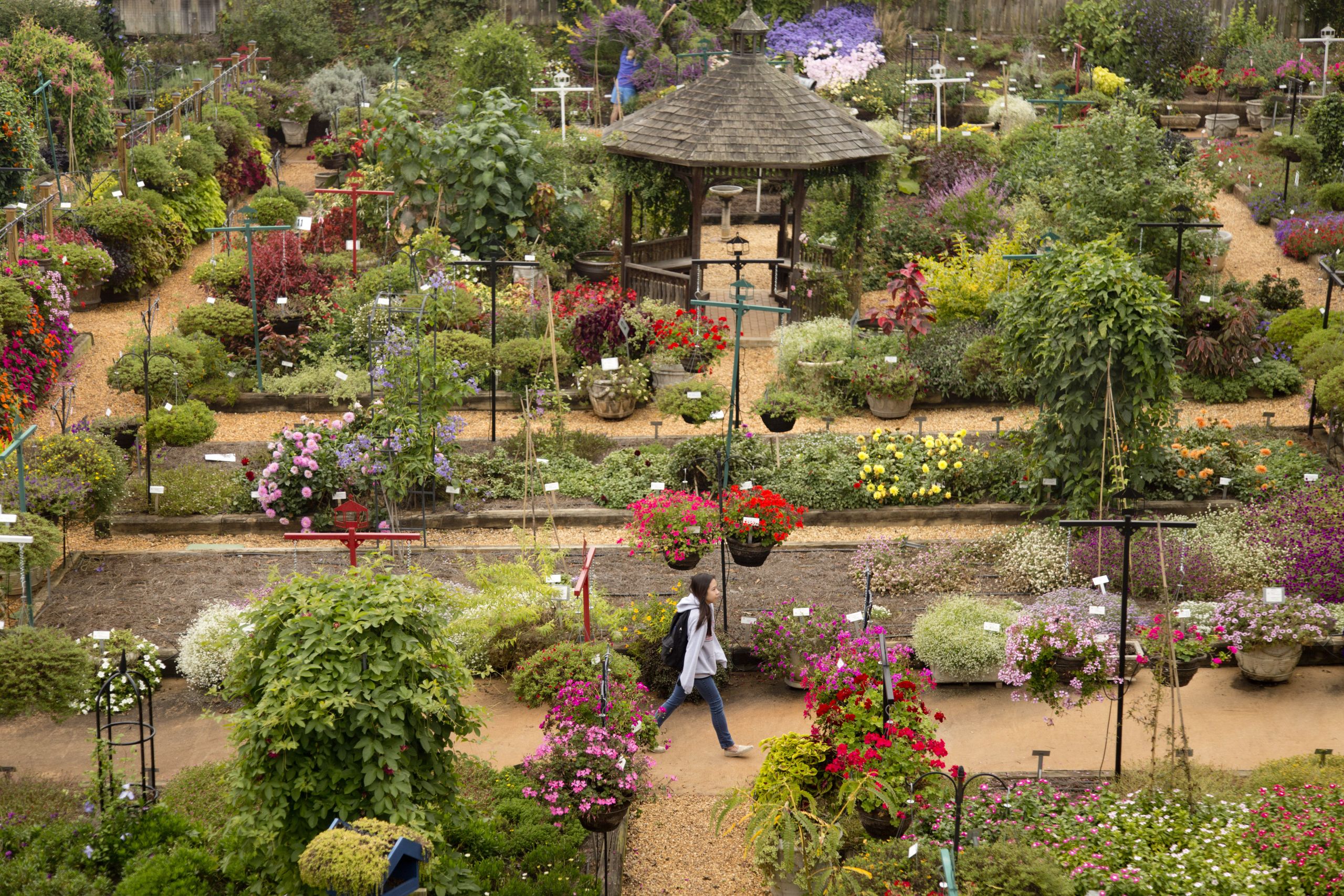
Horticulture Trial Gardens Overhead|A student walks through the UGA Trial Gardens on the way to class on a cool overcast fall morning. Photo by Andrew Davis Tucker
Horticulture Trial Gardens Overhead|A student walks through the UGA Trial Gardens on the way to class on a cool overcast fall morning. Photo by Andrew Davis Tucker
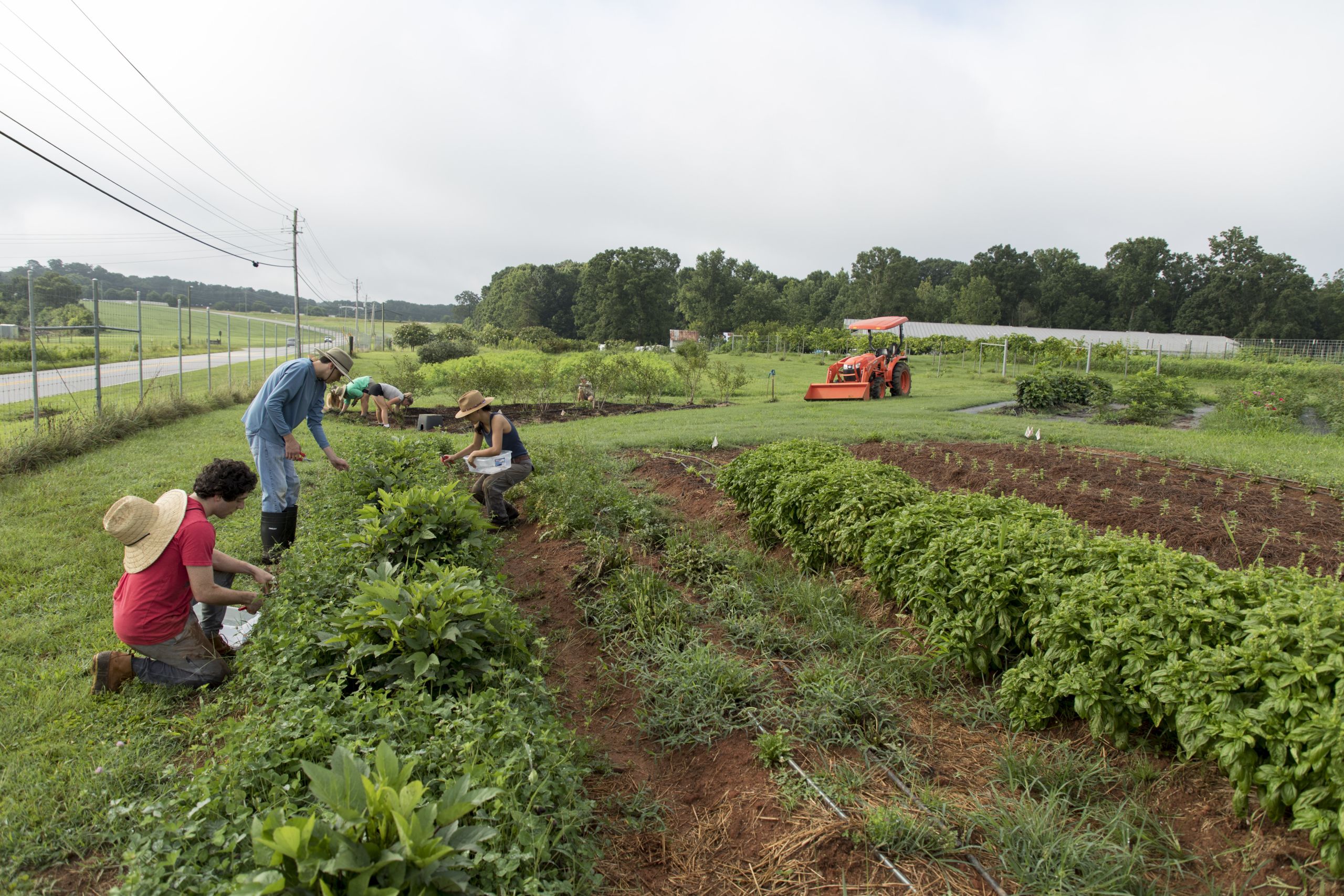
(L-R) Undergraduate students Sam Shafritz, Quinn Webb, and Morgan Watson harvest red clover blooms in the medicinal herb garden at UGArden. Photo by Andrew Davis Tucker
(L-R) Undergraduate students Sam Shafritz, Quinn Webb, and Morgan Watson harvest red clover blooms in the medicinal herb garden at UGArden. Photo by Andrew Davis Tucker
